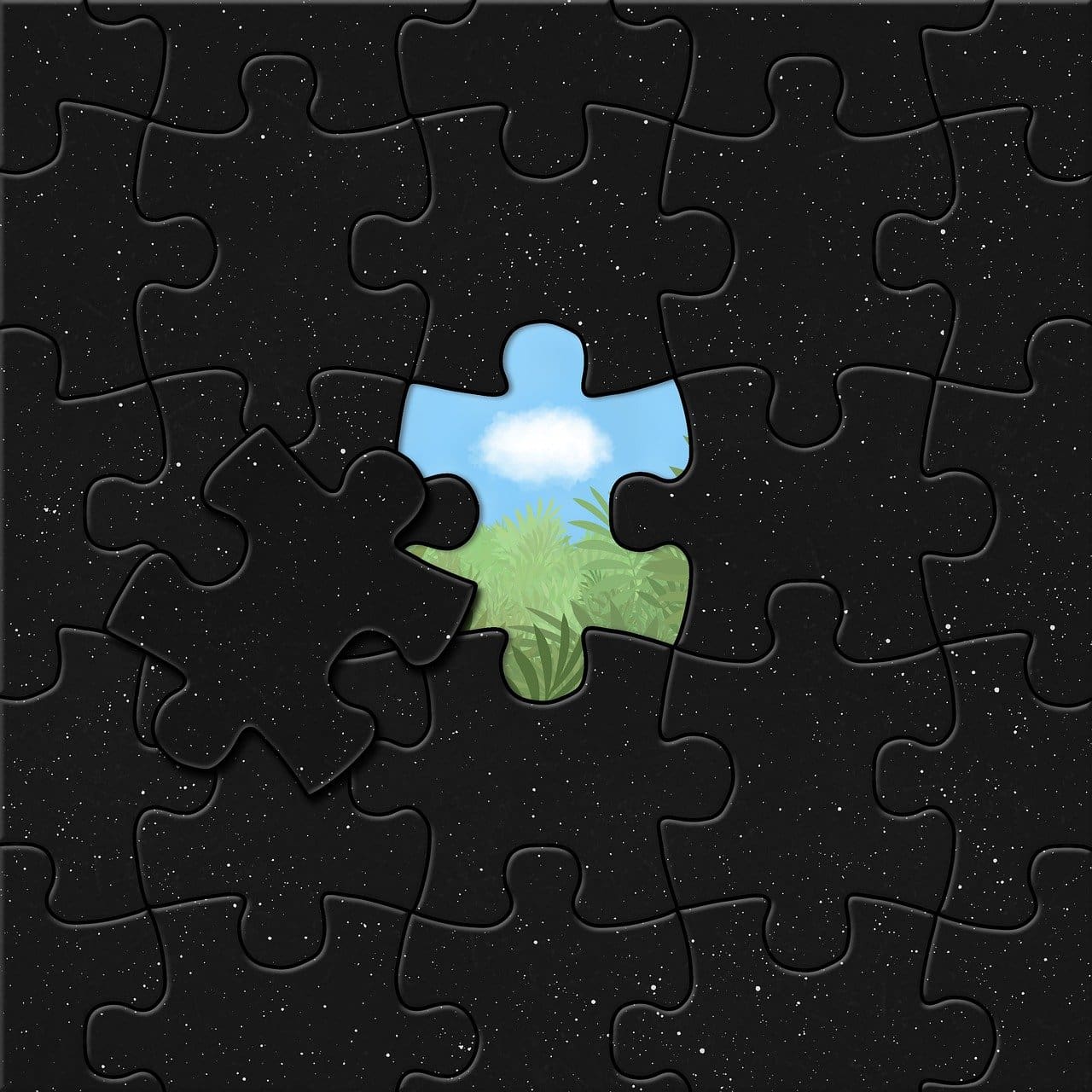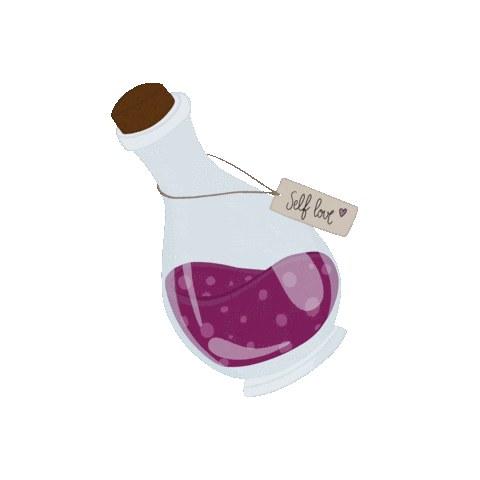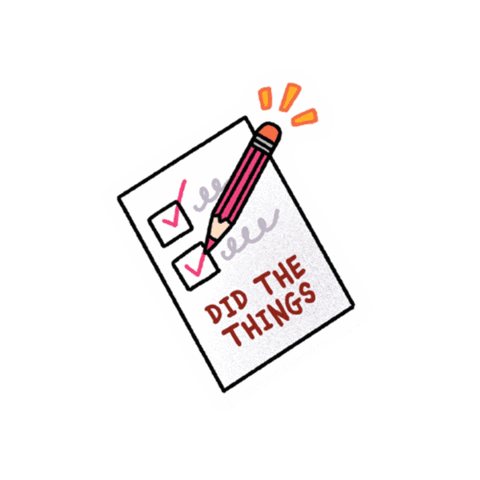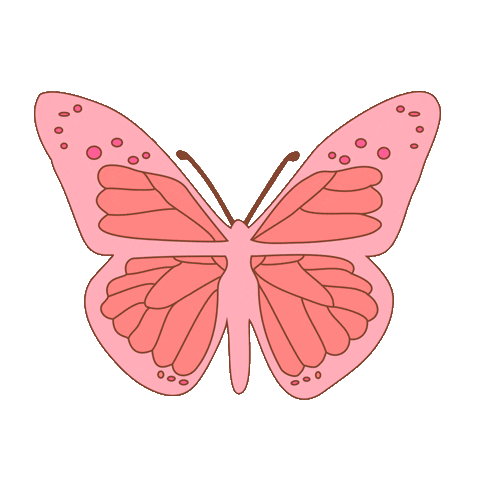the blog
SEARCH
There’s something magical about those quiet morning moments before the day takes hold. This is when setting intentions can be most powerful. The calm before the storm! It’s a precious time to reflect before yet another productive but fulfilling day.

Why Morning Intentions?
Unlike rigid to-do lists, intentions guide how you want your day to unfold. They connect your daily actions to your deeper values.
Choose about four main intentions (or five, if you’re an overachiever like me) each day—enough to move forward without overwhelm. These become your gentle anchors when distractions arise.

Doing this for a week, I have seen change in my self-confidence and mental stamina increase because I continue to meet myself where my goals are set, on the daily.
The Gift of Flexibility
Life rarely follows our plans perfectly. The key is to figure out how to not crash out under a tide of instability or constant reformation.
That’s why the beauty of intentions lies in their flexibility. The order doesn’t matter. What matters is your commitment to fulfill these intentions by day’s end, in whatever way works best.

Building Self-Trust
The science? Each time you honor an intention, you keep a promise to yourself. This simple practice builds profound self-trust over time. With each completed intention, you strengthen your belief in. your. own. word.

A Simple Morning Practice
Step 1. Find Stillness: Take 10 minutes to make your morning beverage in silence. Take a few deep breaths.

Step 2. Choose Four Intentions: Select goals that truly matter to you today.

Step 3. Release the Order: Give yourself permission to complete them in any sequence.

Step 4. Acknowledge Completion: Before sleep, take a moment to recognize what you accomplished.

Remember that some days you’ll complete all four intentions, while other days you might manage just one or two. The magic isn’t in perfect execution—it’s in the consistent practice of showing up for yourself.
By setting intentional goals each morning, you create a meaningful connection to your day and to yourself. This simple ritual doesn’t just improve your productivity—it nurtures a loving relationship with yourself that grows stronger with each passing day.
Intentions as Anchors During Life Transitions
When you’re navigating uncertain waters or standing at the threshold of change, intentions become even more powerful. During these transitional periods, fear often creeps in, making us doubt our path.
But did you know? That uncertainty can be the birthplace of powerful change? 🌓
Try this: Set an intention that speaks to your highest self—the version of you that exists beyond fear and self-doubt. She is the best version of yourself, living unabashed and without restraint. Perhaps it’s “I trust my journey” or “I move forward with courage.” Make this your daily anchor.
What makes this practice transformative is the element of belief. When you commit to your intention wholeheartedly, without fear of judgment (especially self-judgment), something remarkable happens. Your intention shifts from a hopeful thought to an embodied reality.
This isn’t about magical thinking—it’s about creating internal alignment.
When your beliefs, words, and actions harmonize around your intention, you naturally begin taking steps that manifest that reality. Your subconscious recognizes the path and guides you toward opportunities you might otherwise miss.
Remember: The most powerful manifestations often begin in moments of greatest uncertainty and transition. Trust that your intentional focus during these times isn’t just comforting—it’s actively creating your next chapter.
keep reading

The plot twist no one tells you
If you’ve ever been called “flaky” for abandoning pottery after six months to learn coding, then dropping coding to try urban gardening (while maintaining your Duolingo streak and researching skincare ingredients), science has some news for you: your brain might be wired for innovation.
Research from the University of Pennsylvania shows that people with diverse interests develop more neural connections between different brain regions. Translation?
Your “inability to focus” is actually enhanced cognitive flexibility—the exact skill that drives breakthrough thinking.
Why Nobel Prize winners have hobbies
Here’s a stat that’ll blow your mind: Nobel Prize winners are significantly more likely than other scientists to have arts and crafts hobbies.
A study analyzing prodigies found they were 25 times more likely to sing, dance, or act, and 17 times more likely to create visual art. Steve Jobs credited his calligraphy class for inspiring Apple’s revolutionary typography.
Your “random” pottery phase? Maybe it’s innovation fuel. 😜
The reason: Breakthrough ideas emerge at the intersection of different fields. Your pottery knowledge might inform your UI design.
Your music theory might enhance your data visualization. These aren’t accidents—they’re cognitive advantages.
Your boredom is actually completion
The second you let yourself disconnect from your phone and get bored while completing a hobby is when you’re growing the most. Or your brain, at least.
As you attempt to wrangle one puzzle to another, your neural pathways are forging, expanding connections.
Psychologist Dr. Barbara Sher’s research reveals that multi-passionate minds work differently. When you get bored, your brain has extracted the learning it needed and is ready for new challenges. This pattern correlates with higher creativity and better problem-solving abilities.
You’re not scattered. You’re scanning for opportunities.
Why this matters more than your LinkedIn optimization
Most professional skills become outdated every 5 years. In tech fields, it’s even faster—what you learn about AI today will be obsolete in 2 years.
This means the specific major you pick or skill you master matters less than your ability to keep learning new things.
While everyone else is panicking about “finding their passion,” you’re already practicing the only skill that actually matters: adapting quickly to change.
IBM research proves this: employees with diverse backgrounds bounce back faster from layoffs and industry shifts. Your comfort with trying new things isn’t wishy-washy—it’s career insurance.
How to weaponize your wandering mind
Build a T-shaped skill profile: Develop broad competency across many areas (the horizontal bar) while maintaining deeper expertise in 1-2 core areas (the vertical bar).

Document your transfers: Keep a connections journal noting how skills from one area apply to another. Your pottery-to-programming insights are your unique intellectual property.
Embrace project-based thinking: Treat interests as finite learning projects, not potential careers. Removes pressure, maximizes extraction.
Create themed seasons: Spring for creative projects, summer for outdoor adventures, fall for technical skills, winter for cozy inside hobbies. Satisfies your need for variety while giving you something to post about all year.
The future belongs to generalists
AI is automating specialists. Climate change, social justice, technological ethics—the biggest problems require interdisciplinary thinking that comes naturally to multipotentialites.
The creator economy rewards unique perspectives. Your weird mix of pottery + programming + urban gardening + vintage fashion might be exactly what your future career (or side hustle) needs.
Your curiosity is strategic intelligence
Every “phase” is data collection about your preferences, aptitudes, and values. That abandoned pottery taught you about spatial reasoning, patience, tactile creativity, and whether you prefer process-focused work.
You’re not behind because you haven’t picked one thing. You’re building a unique combination of knowledge that no one else has. While your friends stress about their “five-year plan,” you’re developing the adaptability that actually predicts success.
In a world that increasingly rewards creativity, adaptability, and synthesis, your scattered approach isn’t just okay—it’s optimal.
Your path isn’t linear, but it’s yours. And research suggests it might just be the smartest way forward.
References
Root-Bernstein, R., et al. (2008). Arts foster scientific success: Avocations of Nobel, National Academy, Royal Society, and Sigma Xi members. Journal of Psychology of Science and Technology, 1(2), 51-63.
Sher, B. (2006). Refuse to choose!: Use all of your interests, passions, and hobbies to create the life and career of your dreams. Rodale Books.
Wapnick, E. (2017). How to be everything: A guide for those who (still) don’t know what they want to be when they grow up. HarperOne.
keep reading

Why tiny shifts create bigger transformations than dramatic overhauls.
Stop waiting for the perfect moment to change your life.
If you’ve ever started an ambitious 5 AM morning routine only to abandon it by Thursday, or downloaded a meditation app that’s been collecting digital dust for months, you’re not alone.
The self-improvement industry sells us this myth that transformation requires dramatic, all-or-nothing changes.
But neuroscience tells a different story. The most sustainable personal growth happens through small, consistent shifts that work with your brain’s existing patterns, not against them.

This is where habit stacking becomes your secret weapon for actually sticking to changes that matter.
What is habit stacking?
Habit stacking is a behavior change technique based on the psychological principle of “context-dependent learning.” We are constantly learning and adapting due to the context of the situation.
Instead of forcing yourself to create entirely new routines, you anchor learned behaviors to habits you already do automatically.
The formula is simple: After I [existing habit], I will [new habit].
Your brain loves efficiency. When you perform the same action in the same context repeatedly, neural pathways strengthen and brain-malleable plasticity allows your mind to pave new pathways.
By linking new habits to established ones, you’re essentially hijacking these existing neural highways rather than building new roads from scratch. Thus, making the behavior more automatic with practice.
Think of your current routines as the foundation of a house; habit stacking just adds new rooms without rebuilding the entire structure.

Why this Matters for Those in their 20s
Your twenties are a unique neurobiological window. Your brain is still forming around age 25, particularly the prefrontal cortex responsible for decision-making and impulse control.
This means you’re simultaneously more adaptable to change and more vulnerable to stress from major lifestyle overhauls.
Research shows that women in their 20s also face specific challenges that make traditional “dramatic transformation” approaches less effective:
- Identity formation is ongoing. You’re literally still figuring out who you are, which makes sustaining habits tied to a “future perfect self” especially difficult.
- Social pressures are intense. The pressure to “have it all figured out” creates anxiety that actually impairs habit formation by flooding your system with stress hormones.
- Cognitive load is high. Between careers, relationships, finances, and social expectations, your mental bandwidth is already stretched thin. Adding complex new routines often leads to burnout, not breakthrough.
Habit stacking works because it requires minimal willpower and cognitive resources—exactly what you need during this demanding life stage.
Real Habit Stacks that Actually Work
Here are a few examples I’ve been implementing in daily routines:
Morning Mindfulness Stack
Existing habit: Making your morning coffee/tea
New habit: While waiting for it to brew, take three deep breaths and set one intention for the day
Why it works: You’re pairing stress reduction with an existing pleasure ritual, making mindfulness feel indulgent rather than like another task.

Common thoughts: “I don’t have time for meditation.”
Reality check: This takes 30 seconds and actually improves your decision-making for the entire day.
Creative Brain Break Stack
Existing habit: Taking work or study breaks
New habit: Instead of scrolling, spend 5 minutes doodling, writing, or voice-recording ideas.
Why it works: You’re transforming passive consumption -> active creation, which research shows boosts mood and cognitive flexibility.

Common anxieties: “I’m not creative enough.”
Reality check: Creativity is a muscle that strengthens with use, even “bad” doodles count as practice.
Intentional Social Media Stack
Existing habit: Evening scroll time on TikTok/Instagram
New habit: Save one genuinely useful post per session and actually try it within 48 hours.
Why it works: You’re making passive consumption active and purposeful without eliminating something you enjoy.

Common thoughts: “Social media is rotting my brain.”
Reality check: The platform isn’t the problem—passive consumption is. Active engagement with quality content can actually enhance learning!
Analog Planning Stack
Existing habit: Making to-do lists
New habit: Write them by hand using a pen that sparks joy (sparkly gel pens count!).
Why it works: Handwriting activates different neural pathways than typing, improving memory retention and making tasks feel more intentional.

Common thoughts: “Handwriting is slower than typing.”
Reality check: The 2 extra minutes you spend writing actually save time by improving focus and task completion rates.
Evening Creativity Stack
Existing habit: Winding down before bed
New habit: Open a creative app (Adobe Fresco, Pinterest, even Notes for writing) for 10 minutes of playful exploration.
Why it works: Low-pressure creativity before sleep can improve problem-solving and emotional processing overnight.

Common anxieties: “More screen time before bed is bad”
Reality check: Active creative engagement affects your brain differently than passive scrolling—blue light filters can minimize sleep disruption.
The Quick Neuroscience behind Why Small Changes Work
- Dopamine drives habit formation. Small wins trigger dopamine release, reinforcing the behavior loop. Massive changes often delay gratification too long, causing dopamine crashes that make you quit.
- Cognitive load theory explains why. Your brain has limited processing power. Simple habit stacks use minimal cognitive resources, leaving mental energy for other important decisions.
- Identity-based habits stick better. Small changes allow you to gradually embody a new identity (“I’m someone who prioritizes creativity”) rather than trying to become a completely different person overnight.
- Compound effects are real. A 1% daily improvement compounds to 37x better over a year. Small consistent changes literally create exponential transformation over time.
Making habit stacking stick: Evidence-based strategies
Start ridiculously small. If your new habit takes more than 2 minutes, make it smaller. You can always expand later, but you need consistency first.
Use implementation intentions. Write down your habit stack using the specific “After I [X], I will [Y]” formula. Research shows this increases follow-through by 2-3x.
Track your streak, not your outcomes. Focus on showing up consistently rather than measuring results. Consistency is the skill you’re actually building.
Design for your lowest-energy self. Plan habit stacks for when you’re tired, stressed, or unmotivated. If it works then, it’ll definitely work when you’re feeling good.
Make it appealing. Use tools, apps, or materials that genuinely bring you joy. Aesthetic notebooks, favorite playlists, or cozy lighting can significantly improve adherence.
Prepare for obstacles. Identify what might prevent your habit stack and plan around it. If you usually make coffee but sometimes run late, have a backup stack for grab-and-go mornings.
The compound effect of tiny changes
The magic of habit stacking isn’t in any single habit—it’s in the cumulative effect of multiple small changes working together. When you stack 3-5 tiny habits throughout your day, you’re essentially upgrading your entire daily experience without the stress of major lifestyle overhauls.
Over time, these small shifts create a ripple effect:
- Better mornings lead to better decision-making all day
- Creative breaks improve problem-solving at work
- Intentional evenings enhance sleep quality
- Improved sleep boosts emotional regulation
You’re not just changing individual behaviors—you’re upgrading your entire system for living.
Your action plan: Start this week
Day 1-2: Observe your existing routines without changing anything. Notice what you already do consistently.
Day 3-4: Choose one existing habit and one tiny new habit to stack onto it. Write it down using the formula “After I [existing habit], I will [new habit].”
Day 5-7: Practice your single habit stack. Don’t add anything else yet—just focus on consistency.
Week 2: If your first stack feels automatic, add one more. If not, make your current stack even smaller.
Remember: The goal isn’t to become perfect. It’s to become consistent. Your 20s are the perfect time to build the foundation for who you want to become—one tiny, intentional choice at a time.
The bottom line
Real transformation doesn’t require dramatic life overhauls, 5 AM wake-ups, or perfect discipline. It requires understanding how your brain actually works and designing changes that feel natural rather than forced.
Habit stacking lets you become the person you want to be without the stress, overwhelm, or inevitable burnout of traditional self-improvement approaches. You’re not adding more to your life—you’re making what’s already there more intentional.
Start small. Stack smart. Trust the process.
Your future self will thank you for every tiny shift you make today.

References
Clear, J. (2018). Atomic Habits: An Easy & Proven Way to Build Good Habits & Break Bad Ones. Avery.
Duhigg, C. (2012). The Power of Habit: Why We Do What We Do in Life and Business. Random House.
Fogg, B. J. (2019). Tiny Habits: The Small Changes That Change Everything. Houghton Mifflin Harcourt.
Gollwitzer, P. M. (1999). Implementation intentions: Strong effects of simple plans. American Psychologist, 54(7), 493-503.
Lally, P., Van Jaarsveld, C. H., Potts, H. W., & Wardle, J. (2010). How are habits formed: Modelling habit formation in the real world. European Journal of Social Psychology, 40(6), 998-1009.
Neal, D. T., Wood, W., & Quinn, J. M. (2006). Habits—A repeat performance. Current Directions in Psychological Science, 15(4), 198-202.
Sweller, J. (1988). Cognitive load during problem solving: Effects on learning. Cognitive Science, 12(2), 257-285.
Verplanken, B., & Aarts, H. (1999). Habit, attitude, and planned behaviour: Is habit an empty construct or an interesting case of goal-directed automaticity? European Review of Social Psychology, 10(1), 101-134.
keep reading

Remote work is no longer a temporary shift—it’s a permanent evolution in the workforce. But what’s driving this transition? Several key factors are making remote work not just viable but preferable for many professionals and companies alike:
1. Advancements in Technology & Digital Collaboration
High-speed internet, cloud computing, and collaboration tools like Slack, Zoom, Notion, and Asana have made remote work as seamless as being in an office. AI-powered project management and cybersecurity improvements ensure efficiency and safety in digital workplaces. 💫
2. Increased Productivity & Work-Life Balance
Studies from Stanford and Harvard show that remote workers are often more productive due to fewer office distractions and more personalized work environments. Employees report higher job satisfaction when they have the flexibility to balance work with personal priorities, leading to better mental health and engagement.
3. Cost Savings for Companies & Employees
Remote work reduces costs for businesses (less office space, utilities, and overhead) and for employees (commuting, lunch expenses, and work attire). This financial efficiency makes remote work a long-term win for both sides.
4. The Workforce’s Demand for Flexibility
Millennials and Gen Z highly value work-life integration, preferring jobs that allow remote or hybrid setups. The pandemic accelerated this shift, and now many professionals expect autonomy over their schedules when considering new job opportunities.
5. Access to a Global Talent Pool
Companies are no longer limited to hiring talent within commuting distance. Remote work allows businesses to recruit the best professionals worldwide, leading to greater diversity and skill specialization.
6. Environmental & Health Benefits
With fewer people commuting daily, there’s a significant reduction in carbon emissions. Additionally, remote work supports better physical and mental health, giving employees more time to exercise, sleep, and manage stress effectively. 🌱

Bonus! How to Maintain a Strong Work-from-Home Presence Without Burning Out
Remote work is more than just a trend—it’s the new normal. But as companies continue to embrace flexible work, the challenge becomes clear: How do you maintain a strong professional presence when no one actually sees you? Without the office setting, it’s easy to fade into the background. Here’s how to ensure your work-from-home presence stays impactful while keeping burnout at bay, using science-backed strategies that optimize focus, productivity, and well-being.
1. Curate Your Digital Workspace for Optimal Focus
Your work environment significantly impacts cognitive performance. Research in environmental psychology suggests that a clutter-free workspace reduces cognitive load, allowing for better focus and information retention. A well-designed digital workspace can enhance motivation and productivity. Consider:
- A minimalist, organized desk to reduce distractions (studies show visual clutter increases stress levels)
- A high-quality webcam & microphone for clear virtual communication, boosting professional presence
- A designated work area separate from relaxation zones to improve context-dependent memory retrieval, which aids efficiency
- Soft lighting and cozy ambiance, even during the daytime, to make your workspace feel inviting
- Playing lo-fi, instrumental, or nature sounds in the background to enhance concentration
2. Keep Your Visibility High with Proactive Engagement
A study published in the Journal of Business and Psychology found that proactive communication in remote work environments increases perceived competence and leadership potential. To maintain visibility and stay top-of-mind:
- Actively participate in virtual meetings, contributing concise and meaningful insights
- Schedule periodic check-ins with team members or managers to maintain rapport
- Send brief, structured progress updates on projects to enhance accountability and trust
3. Set Boundaries to Prevent Burnout
Remote workers are at a higher risk of burnout due to blurred work-life boundaries. Neuroscientific research suggests that chronic stress impairs prefrontal cortex function, which affects decision-making and creativity. To protect mental well-being:
- Establish clear work hours and communicate them to your team
- Use the Pomodoro Technique (25-minute focus sessions followed by 5-minute breaks) to prevent cognitive fatigue
- Physically separate your workspace from personal areas to signal the end of the workday to your brain
4. Leverage “Soft” Productivity Rituals for Mental Resilience
Cognitive-behavioral studies indicate that rituals help reinforce habits and increase efficiency by reducing decision fatigue. Implementing simple routines can improve focus and mental clarity:
- Morning check-ins with yourself: “What are my top 3 priorities today?”
- Midday movement breaks: A 10-minute walk boosts dopamine and serotonin levels, enhancing mood and focus
- Evening wind-down routine: Reading, stretching, or journaling to transition from work to personal time
- Light makeup or a fresh outfit to feel confident and “ready” for the day, even if you’re not leaving home
- Allowing yourself fun, creative work sessions, such as designing or brainstorming in apps, without guilt
5. Optimize Digital Communication for Stronger Connections
Remote work requires intentional communication to compensate for the lack of nonverbal cues. Research from UCLA suggests that 93% of communication effectiveness comes from nonverbal elements such as tone, body language, and facial expressions. Improve digital interactions by:
- Keeping emails concise yet warm, using clear action points
- Utilizing digital collaboration tools (Slack, Notion, Asana) to enhance workflow transparency
- Using video calls strategically—visual engagement builds stronger social connections compared to text-based interactions
6. Invest in Continuous Learning to Stay Competitive
A report from the World Economic Forum highlights that upskilling is key to career longevity in a remote-first world. Staying ahead in a digital work environment requires ongoing learning and adaptability:
- Take online courses on industry trends, digital marketing, or leadership skills
- Attend virtual networking events to stay connected within your field
- Share knowledge with your team—teaching others reinforces learning and positions you as a thought leader
Final Thoughts 💗
Your work-from-home presence is not just about what you do—it’s about how effectively you show up. By integrating these science-backed productivity and communication strategies, you can maintain a strong professional identity, boost efficiency, and thrive in a remote work environment without burning out.
Embrace the balance between visibility, well-being, and growth, and watch your remote career flourish!

keep reading
